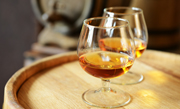
As far back as the 15th century, mainly Spanish and French wines were exported in bulk to England and Holland. At some point, producers came up with the idea to distil the wine, transport it, and then add water before serving or selling it. They distilled the wine from nine barrels into one, and because of the fire necessary for the distillation process, the Dutch began referring to the product as wijnbranders - which means 'wine burnt'. This, in turn, evolved into brandywijn and ultimately to brandy. Today, brandy is produced in many other EU countries - most notably from countries such as Germany and Italy.
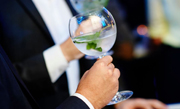
Gin is made from pure distilled spirits, normally from grain or molasses, with a clean neutral flavour. In the case of London Distilled gin, the neutral spirit is re-distilled in the presence of botanicals to give the resultant gin its flavour.
It takes its flavour from botanicals - natural herbs and spices - and all gins include juniper, which must be the main or characteristic flavour. Botanical recipes are unique to each brand and are often a secret, traditionally closely guarded by the makers. They can include coriander, lemon peel, cinnamon, nutmeg, orange peel, angelica and cardamom.
Gin originated in Holland in 1550 when Professor of Medicine, Franciscus de la Boe was trying to create a cure for stomach complaints, using the diuretic properties of juniper berries. He created the infusion, which he named Genever, which soon became popular as an alcoholic drink.
During the 30 years of war, English troops were given rations of Genever to keep out the cold before battle. A love affair started, and the drink, which became affectionately known as 'Dutch courage', was taken back to England. The name "Gin" is the anglicised version of the Dutch word "Genever," but the modern day products are very different. Dutch Genever styles are generally more deeply and richly flavoured, and juniper need not predominate, while London Dry gin is lighter, crisper and dry in style with a predominant juniper flavour.
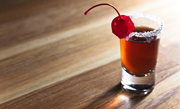
Liqueurs originate from as far back as the 13th Century although the modern usage of the term 'liqueur' only came into use in the 16th Century.
A liqueur is made by combining distilled spirits with a variety of flavourings and sweetening to various degrees. Liqueurs are, by definition, sweet alcohols, and must contain at least 2.5 % sugar by weight so as to endow them with the name of being a 'liqueur'. Most, however, have between 17% and 35% sugar weight per volume alcohol (some even have as much as 55 %).
There are three main ways to make liqueurs:
Liqueurs are normally consumed as aperitifs, as 'digestifs', as component of classic cocktails or as a flavour enhancement to foods when cooking - normally for desserts and puddings.
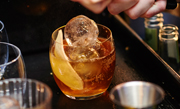
The history of rum began in the Caribbean when the inhabitants of Barbados took the leftovers from the sugar cane used for making sugar, molasses, and made alcohol from it.
Rum, and its twin, cane spirit, are made by distilling fermented sugar and water. This sugar comes from the sugar cane and is fermented from cane juice, concentrated cane juice, or molasses. Molasses is the sticky residue that remains after sugar cane juice is boiled and the crystallised sugar is extracted. Most Rum is made from molasses - over 50 % sugar - but it also contains significant amounts of minerals and other trace elements, which can contribute to flavour. In 1672, the beverage acquired the name rum.
The name is held to have originated from the word 'rumballion,' which in the slang of the time meant clamour or noise. Rum is traditionally a clear drink, yet many manufacturers age or colour their rum to give it a dark or golden tint. Most aging takes place in barrels that once held whiskey or bourbon. Plantation owners sold rum to navy ships and pirates. In the 1730s, the British Navy started the custom of giving sailors a daily half-pint of 80 per cent proof rum. This was later diluted with the same amount of water, after which it was called grog. The main reason for sailors' use of rum was that it could endure long voyages better than water or beer.
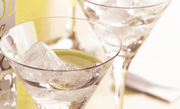
Vodka is a pure distilled spirit that is made from grain or potatoes and other agricultural products. It is then charcoal filtered, rectified or distilled again to reduce levels of natural congeners and ensure a very clean taste. It is produced and consumed all over the world.
The word 'vodka' is derived from the Slavic word 'voda', or the Polish 'woda', meaning water. The history of vodka is hotly debated - while the first documented production of vodka was in Russia at the end of the 9th century, Poland also lays claim to have begun distilling vodka earlier, in the 8th century.
In the mid-16th century, vodka was established as the national drink in Poland and Finland. In Russia as well, vodka was used frequently as a medicine.
Around 1450, vodka started to be produced in large quantities and the first recorded exports of Russian vodka were to Sweden in 1505. Polish exports started a century later, from major production centres in Posnan and Krakow.
Vodka continued to grow in popularity throughout the 19th century, helped in part by the movement of soldiers during the Napoleonic Wars. New products were produced to meet demand, many of which were based on distilled potato mash.
After the Russian Revolution in 1918, the Bolsheviks confiscated all private distilleries in Moscow and a number of Russian vodka-makers emigrated, taking their skills and recipes with them and the drink continued to grow in popularity across the world.
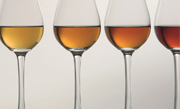
Wine spirits are among the EU’s oldest distilled drinks and provide consumers with some of the best known products, including France’s Cognac and Armagnac, Portugal’s Aguardente, Bulgaria’s Rakya and Romania’s Vinars.
They are made by distilling wine or redistilling wine distillate and are invariably matured. While matured wine spirits are required to spend 6 or 12 months in oak casks, it is often much longer; some spend several decades maturing, with flavours deepening and becoming more complex in the process
The production area of Cognac was defined in 1909 and the six wine growing areas for Cognac were established in 1938. It takes about 10 liters of wine to produce a liter of 70% vol Cognac. The wine is double distilled in a traditional Charentais copper still and the eau-de-vie that is obtained is aged for many years exclusively in French oak barrels, from the Tronçais or Limousin.
Armagnac is the oldest wine based eau-de-vie produced in southwest France, in the heart of Gascony. Obtained from the distillation of white wine in an “continuous” Armagnac still (i.e. the wine permanently feeds the still from the bottom of the cooler) and put to age for many long years in oak barrels before being sold, it comes as blends (made from several eaux-de-vie from different harvests) or as vintages that are specific to Armagnac (one single year of harvest).
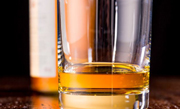
With Scotch Whisky and Irish Whiskey, Europe is at the centre of the whisk(e)y industry - a spirit drink enjoyed around the world. As readers with a keen eye will have already spotted, it is spelt differently - with or without an 'e' - depending on where the spirit is produced.
While its origins have been lost in history, whisk(e)y has been distilled for hundreds of years. The word whisk(e)y is of Celtic (Scottish/Irish) origin, and comes from 'uisce beatha' meaning water of life.
Whisk(e)y is a distilled spirit drink made only from natural raw materials - cereals, water and yeast.
Malt whisk(e)y is made from malted barley only using traditional copper pot stills, while grain whisk(e)y is made from malted barley together with unmalted barley and other cereals, using the patent still process. A skilful marriage of both malt and grain whiskies - sometimes involving up to 40 different whiskies - produce world famous blended whiskies.
Distilled in a traditional way to retain the aromas and flavours of the cereals, whiskies must be matured for at least 3 years in wooden casks, with maturation often lasting many more years. This period in cask imparts whiskies with a distinctive golden colour and added complexity of flavour.
Despite their family relationship, there is wonderful variety and each whisk(e)y is a unique experience - different in its character and flavour but always to be enjoyed.
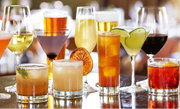
In Europe traditional spirit drinks are classified into one of the 46 defined categories and conform to traditional and precise practices.
Apart from the internationally well-known Brandy, Gin, Liqueur, Rum, Vodka or Whisky categories, a large number of spirit drinks have been produced traditional in Europe such us Fruit spirits, Cider spirits, Aquavit, Pastis, Anis, Sambuca or Advocat.
They represent the complexity of the European spirit drink sector whose success has its roots in tradition and qualitative production systems.